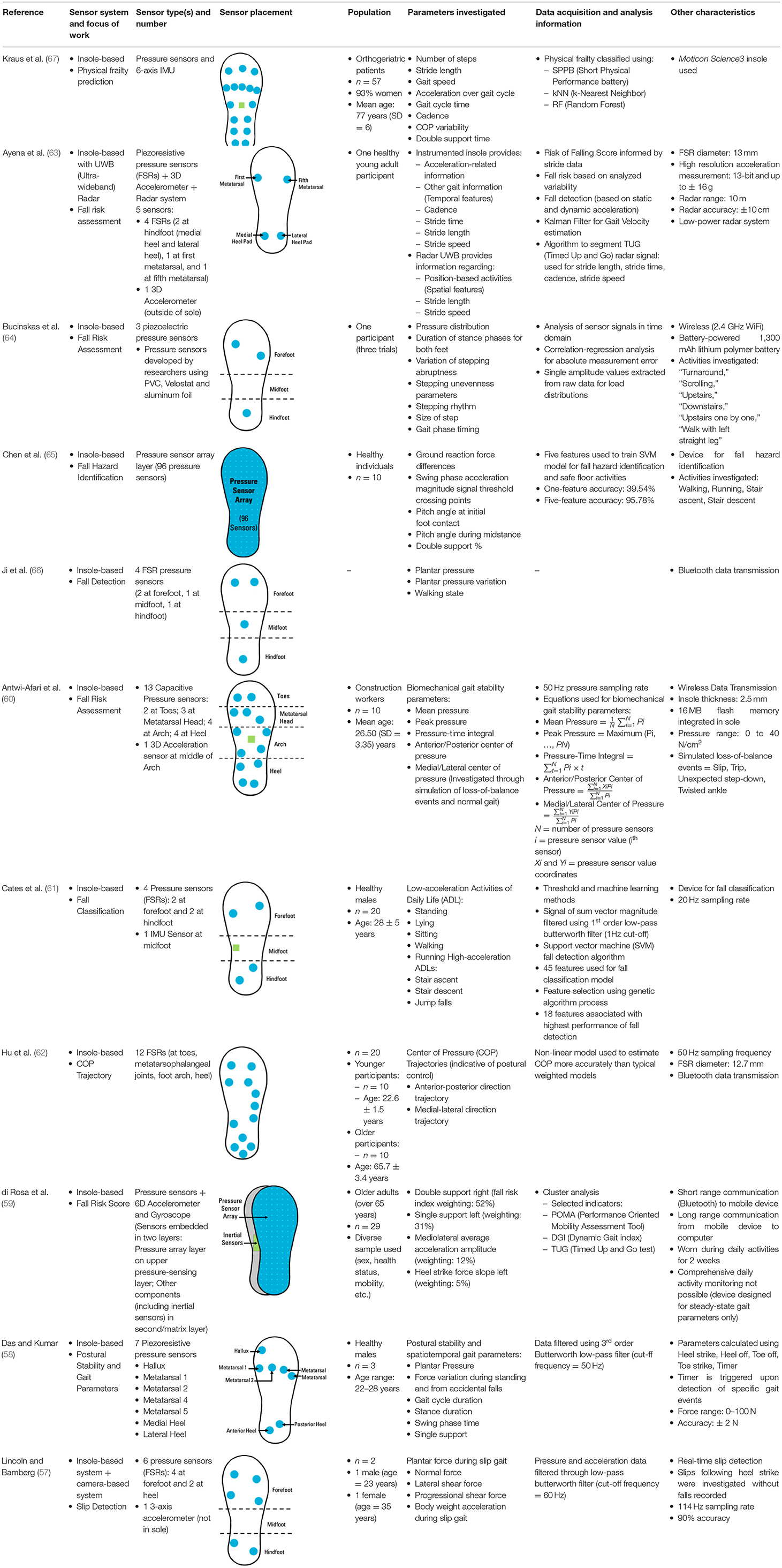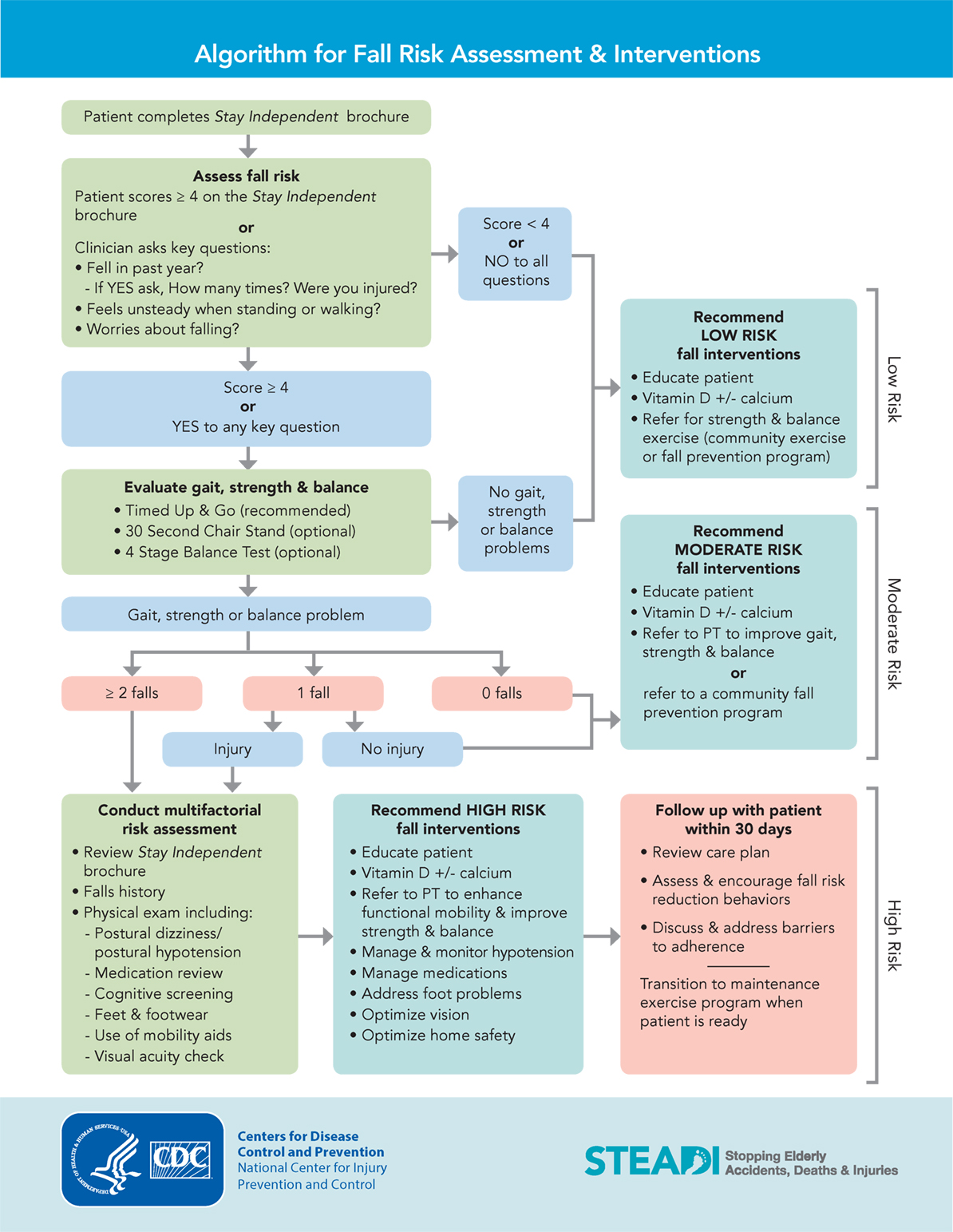Some Of Dementia Fall Risk
Wiki Article
A Biased View of Dementia Fall Risk
Table of ContentsDementia Fall Risk - QuestionsSee This Report about Dementia Fall RiskThe Facts About Dementia Fall Risk RevealedDementia Fall Risk for Beginners
A loss danger evaluation checks to see exactly how likely it is that you will drop. It is primarily provided for older adults. The analysis usually consists of: This includes a collection of concerns about your total health and if you've had previous drops or troubles with balance, standing, and/or walking. These devices check your strength, balance, and stride (the method you walk).STEADI includes testing, analyzing, and treatment. Interventions are referrals that might decrease your threat of falling. STEADI consists of three steps: you for your threat of dropping for your threat elements that can be boosted to try to stop drops (for instance, balance issues, impaired vision) to minimize your risk of dropping by utilizing effective methods (as an example, supplying education and learning and sources), you may be asked several concerns consisting of: Have you fallen in the previous year? Do you feel unstable when standing or strolling? Are you worried regarding falling?, your provider will check your stamina, equilibrium, and stride, utilizing the adhering to autumn evaluation tools: This examination checks your stride.
Then you'll take a seat again. Your provider will inspect how lengthy it takes you to do this. If it takes you 12 seconds or even more, it may imply you are at higher danger for a loss. This examination checks toughness and equilibrium. You'll sit in a chair with your arms went across over your upper body.
Relocate one foot midway forward, so the instep is touching the huge toe of your other foot. Move one foot completely in front of the various other, so the toes are touching the heel of your various other foot.
Some Known Factual Statements About Dementia Fall Risk
The majority of falls occur as an outcome of numerous contributing factors; consequently, taking care of the threat of falling starts with determining the factors that add to fall risk - Dementia Fall Risk. Several of the most appropriate risk variables consist of: History of prior fallsChronic medical conditionsAcute illnessImpaired gait and equilibrium, lower extremity weaknessCognitive impairmentChanges in visionCertain high-risk medicines and polypharmacyEnvironmental elements can additionally raise the threat for falls, consisting of: Inadequate lightingUneven or harmed flooringWet or slippery floorsMissing or harmed handrails and get hold of barsDamaged or incorrectly equipped equipment, such as beds, wheelchairs, or walkersImproper use assistive devicesInadequate guidance of the people living in the NF, consisting of those who exhibit why not find out more hostile behaviorsA successful loss threat administration program calls for a complete medical analysis, with input from all participants of the interdisciplinary team

The care strategy must also include treatments that are system-based, such as those that advertise a safe atmosphere (proper lights, handrails, grab bars, and so on). The efficiency of the interventions must be assessed occasionally, and the care strategy changed as essential to mirror adjustments in the autumn risk analysis. Executing a fall risk management system utilizing evidence-based finest technique can decrease the prevalence of falls in the NF, while limiting the capacity for fall-related injuries.
The 8-Minute Rule for Dementia Fall Risk
The AGS/BGS standard suggests evaluating all grownups matured 65 years and older for loss risk annually. This testing contains asking clients whether they have actually dropped 2 or more times in the previous year or looked for clinical interest for an autumn, or, if they have actually not dropped, whether they really find out here feel unsteady when strolling.Individuals that have fallen as soon as without injury ought to have their equilibrium and gait examined; those with stride or equilibrium problems should obtain additional assessment. A background of 1 loss without injury and without stride or balance troubles does not require more evaluation past ongoing annual autumn danger screening. Dementia Fall Risk. An autumn threat analysis is needed as component of the Welcome to Medicare examination

Dementia Fall Risk Can Be Fun For Anyone
Documenting a falls background is one of the top quality indicators for autumn prevention and administration. Psychoactive drugs in certain are independent forecasters of falls.Postural hypotension can often be eased by decreasing the dose of blood pressurelowering drugs and/or stopping medications that have orthostatic hypotension as a side effect. Use of above-the-knee assistance hose pipe and copulating the head of the bed boosted might additionally decrease postural reductions in high blood pressure. The suggested elements of a fall-focused checkup are received Box 1.

A pull time above or equal to 12 secs recommends high loss danger. The 30-Second Chair Stand examination assesses reduced extremity stamina and equilibrium. Being incapable to stand up from a chair of knee height without making use of one's arms indicates raised fall risk. The 4-Stage Balance examination assesses fixed balance by having the client stand in 4 positions, each gradually more difficult.
Report this wiki page